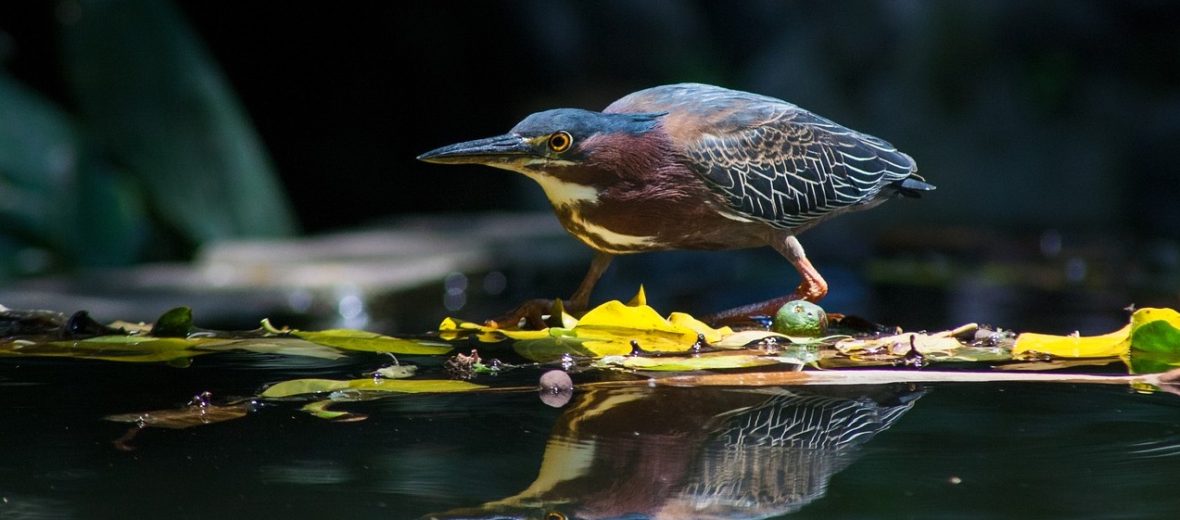
The green heron, aka little green heron, green-backed heron, chucklehead, or poke, is a globally distributed bird that can be found in North America, South America, Africa, Oceania, Asia, and Europe. These adaptable birds can tolerate any shallow wetland environment, in which they live. They tend to stick to thickets but, when food is available, they can be found out in the open. Due to their widespread distribution and stable numbers, these herons are listed as Least Concern by the IUCN. They do face the threats of human disturbance, habitat loss, and suffer from pesticide use.
First the Stats…
Scientific name: Butorides virescens
Weight: Up to 6.2 ounces
Length: Up to 18.1 inches
Wingspan: Up to 26.8 inches
Lifespan: Up to 8 years
Now on to the Facts!
1.) These herons are crepuscular (active at dusk and dawn). They also exhibit nocturnal (active at night) habits.
2.) Green herons tend to feed alone as they don’t tolerate the presence of other birds.
3.) When they feel threatened, these birds will hold their neck still, raise their crest, and flutter their tail.
4.) Being intolerant of other birds green heron will, upon the sight of a nearby bird, immediately attack it by flying towards it and making a loud, guttural, and repetitive “annnck-annnnck” call.
5.) A group of herons, although not a common sight, is called a battery, hedge, herd, sedge, seige, or rookery.
But wait, there’s more on the green heron!
6.) Fish, insects, amphibians, crayfish, invertebrates, earthworms, leeches, dragonflies, grasshoppers, mice, voles, moles, lizards, snakes, frogs, and tadpoles are all on the menu.
7.) Snakes, crows, and common grackles are known to eat green heron eggs. Raccoons will eat nestlings, and birds of prey will seek out young and adult green herons.
Did you know…?
These birds have been documented dropping insects, food, or other small items on the surface of the water to attract fish. Thus making them 1 of the few known tool-using bird species.
8.) Being serially monogamous, green herons will mate with only 1 partner each breeding season.
9.) The mated pair will build a nest of stems and sticks that is guarded by the male.
10.) Females lay up to 4 eggs that hatch in up to 25 days.
But wait, there’s still more on the green heron!
11.) Even though they prefer shallow water, they are capable of diving into deeper water for prey and their webbed feet assist them in swimming back to shore.
12.) The Green heron belongs to a group of smaller herons that include the Striated heron and the Galapagos heron.
13.) At one time, and possibly still to this day, these herons were killed due to their habit of looking for prey in fish hatcheries.
Now a Short Green Heron Video!
Be sure to share & comment below! Also, check out the Critter Science YouTube channel. Videos added regularly!
Want to suggest a critter for me to write about? Let me know here.
Think you know a lot about critters? Try your hand at these fun, free quizzes:



